Good Night everyone for all of our friends who are at Blurtter and have been joining Blurtter for a long time, hopefully we are always healthy and can always carry out activities as usual. So on this occasion I want to write a little bit about Valanga Nigricornis | Photography | Macro hopefully later it can become a memory for myself, and for other friends who are already married, don't forget to also give directions and input if later in my writing there are still words- words that are not polite, therefore I apologize once again.
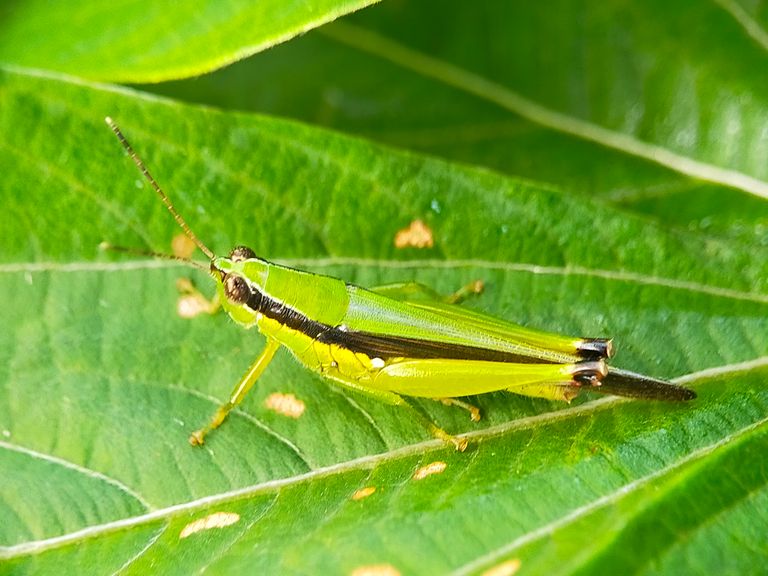
We can see for ourselves how many creatures on this earth are free to roam without having to pay a penny, as well as one of the insects that I want to discuss in this post, which is a type of insect called a locust. Grasshoppers are herbivorous insects from the suborder Caelifera in the order Orthoptera. This insect has antennae which are almost always shorter than the body and also has a short ovipositor. The sound made by some species of grasshoppers is usually produced by rubbing the hind femurs against the forewings or abdomen (called stridulation), or by flapping the wings while flying. The hind femurs are generally long and strong which are suitable for jumping. These insects are generally winged, although the wings are sometimes disabled for flight. Female grasshoppers are generally larger than male grasshoppers. Grasshoppers prefer open, valley areas with lots of grass and other low plants, although some other species live in forests or wilderness. Some others are on cliffs, soil, and damp mossy rocks and consume moss. Many species of grasshoppers that live in the grasslands often attack the fields of farmers around. An excess population of locusts will be very detrimental to farmers if they attack crops on plantations.
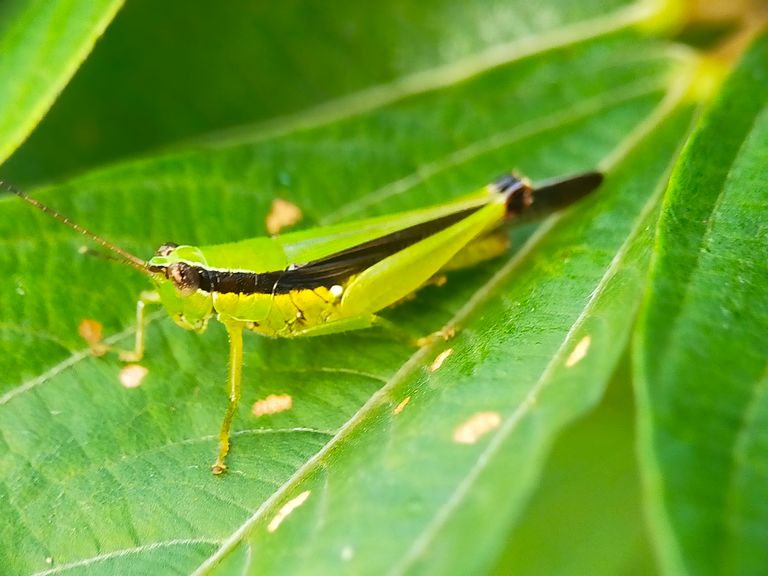
In several countries, locusts are consumed as a source of protein. For example, in southern Mexico, chapulines are favored because of their high protein, mineral and vitamin content. The locusts are usually collected at dusk, with the help of a lamp or flashlight, using a broom net. Furthermore, the grasshoppers are put in water for 24 hours, then they can be eaten raw or by boiling, sun-dried, fried, seasoned with garlic, shallots, chilies, given lime juice, and used for soup or as a filler for various dishes. The grasshopper menu is quite abundant at food markets and street vendors in Central and Southern Mexico. At Chinese food markets, for example the Donghuamen Night Market, locust dishes are served on skewers. In several countries in Africa, locusts are an important food source besides several other types of insects. Grasshoppers are a source of protein and fat for the daily diet, especially during a food crisis. Usually grasshoppers are cooked in soup. Grasshoppers consumed in Uganda and some neighboring regions are called nsenene, although they are actually grass crickets.
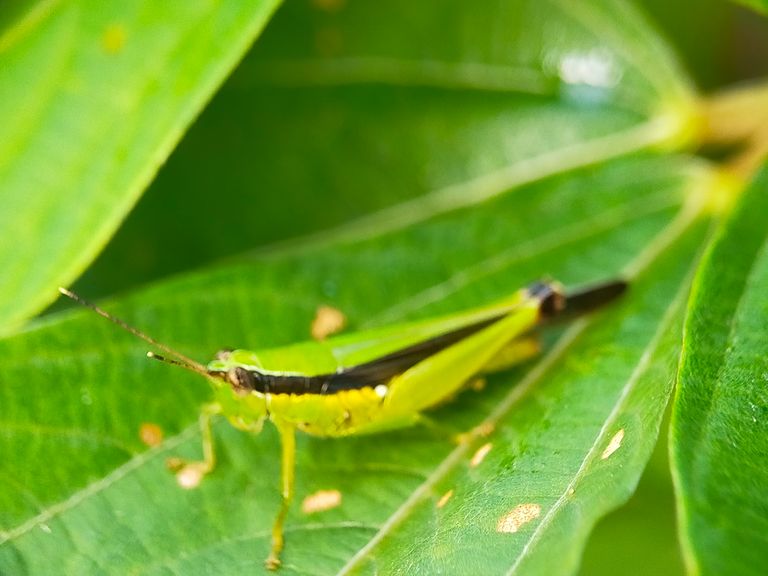
In several countries in the Middle East, grasshoppers are boiled with salt, dried in the sun, then eaten as a snack. In Gunungkidul Regency, Special Region of Yogyakarta, Indonesia, people usually process grasshoppers into fried grasshoppers (Javanese: Walang goreng). The types of locusts used are wood locusts and rice locusts which are usually plant-destroying pests. Many insects are predators for grasshoppers, for example various types of ants such as those in the genus Crematogaster.

If we look at its shape, it seems that this locust doesn't interfere with human activities, but the fact remains that this locust is a pest that is very dangerous for a farmer. I found grasshoppers in my strawberry growing area recently. Group in a colony so spend most of the leaves by leaving holes in the affected leaves. Not surprisingly, grasshoppers are animals with big appetites. In a day able to spend food half of his body weight. If one locust can be estimated how many leaves it eats, if it is in a colony, of course it will experience even more losses. This herbivorous insect is able to jump up to 20 times its body length. Its life cycle starts from the beginning of the dry season when locust eggs stored in the ground, leaves or stems will hatch. incomplete metamorphosis. The process of changing the shape of the grasshopper through 3 stages, namely the egg phase, the nymph phase, and the adult grasshopper phase. After the locust eggs hatch, they will become nymphs which are white in color and will turn green or brown when exposed to sunlight. The appearance of the wings becomes the last phase in the nymph stage and switches to the adult grasshopper stage. Adult grasshoppers can survive up to 12 months. The locust predators are rats, snakes, scorpions, spiders and several types of birds. When threatened, the grasshopper will emit a brown liquid, jump high, or will do camouflage, which is in the grass or leaves that have the same color as its body so that it is difficult to recognize and find its predators.
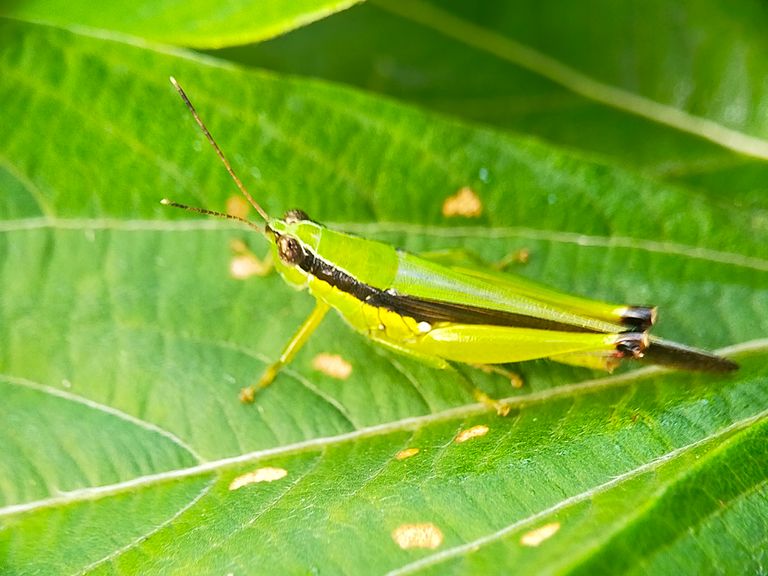
One of the obstacles often faced in increasing corn production is plant pest organisms (OPT). According to Subandi et al. 1988. The OPT referred to, one of which is the Grasshopper Pest (Locusta migratoria) The female locust is capable of producing around 270 eggs. The eggs are whitish and banana-shaped, neatly arranged about 10 cm below the soil surface. According to BPOPT (2000), the eggs will hatch after 17 days. The yellowish-brown female imago is ready to lay eggs after 5-20 days, depending on temperature. A female can produce 6-7 egg bags in the soil with 40 eggs per bag. The female imago only needs one mating to lay her eggs in these pouches. The shiny yellow male imago develops faster than the female. The adult life span is 11 days. The average life cycle is 76 days, so that in a year it can produce 4-5 generations in the tropics, especially Southeast Asia. In subtropical regions, these insects produce only one generation per year. The wandering locusts experience three phases of population growth, namely the solitary phase, the transient phase, and the gregaria phase. In the solitary phase, locusts live alone and do not cause damage to plants. In the gregaria phase, the locusts live in clusters in large groups, moving around and destroying plants on a large scale.
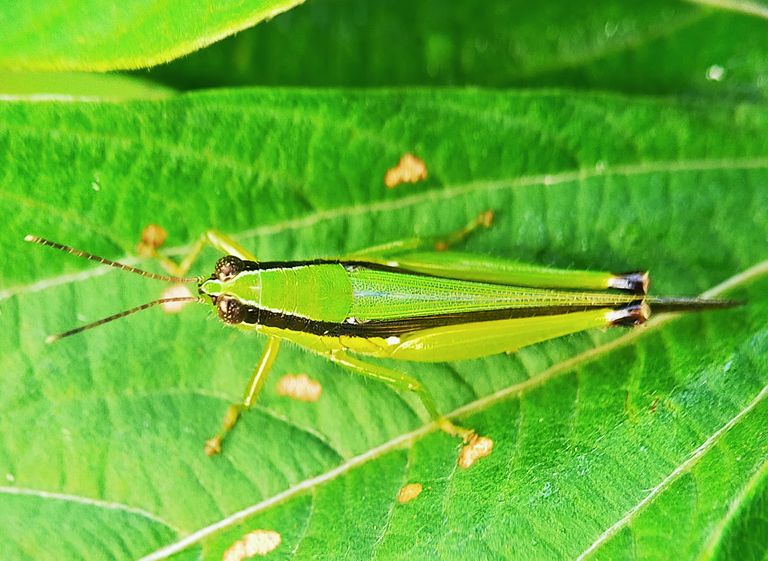
The phase changes from solitary to gregaria and from gregaria back to solitary are influenced by climate, through phases called transients. The change of solitary to gregaria phase begins at the beginning of the rainy season after going through a fairly dry (below normal) dry season. At that time, there is usually an increase in the population of solitary locusts arriving from various locations to a location that is ecologically suitable for development. This location is usually open land or lots of grass, loose sandy soil, and near water sources (rivers, lakes, swamps). ) so that the soil conditions are quite moist. After 3-4 generations, if environmental conditions allow, the solitary phase will develop into a gregaria phase, through a transient phase. This location is known as the initial breeding site. The change from the gregaria phase back to the solitary phase usually occurs when environmental conditions are unfavorable for grasshopper life, especially due to the influence of rainfall, pressure from natural enemies and or control measures by humans. This change also goes through a transient phase. The wandering locusts in the gregaria phase actively fly during the day gathering in large groups. At dusk, groups of locusts alight at a location, usually to lay their eggs on empty, sandy areas, eat the plants they land on, and mate. In the morning, groups of locusts fly around or move locations. Plants that are infested at night are usually eaten up.
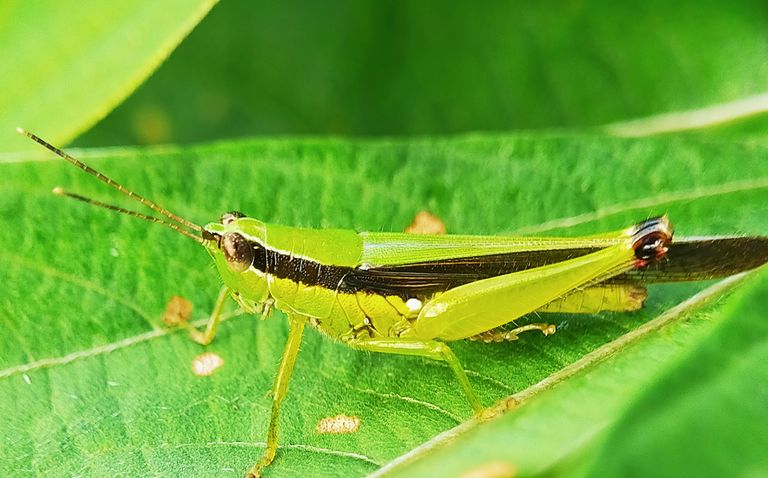
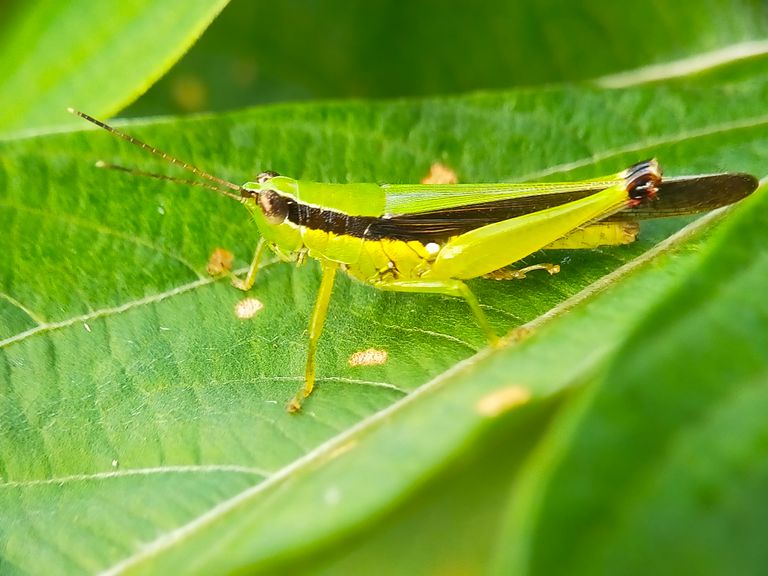
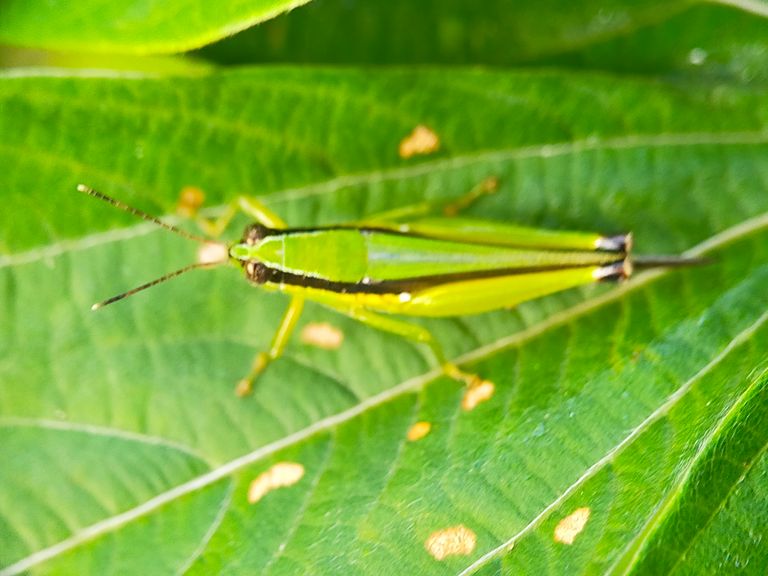
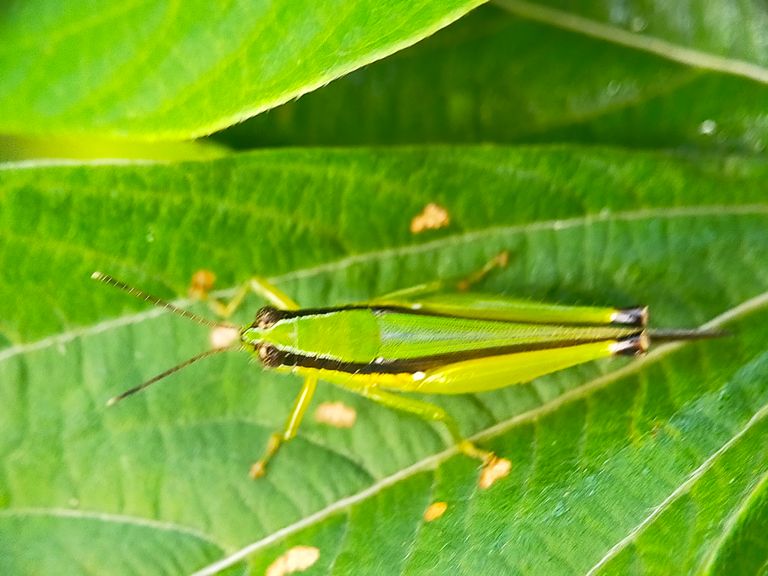
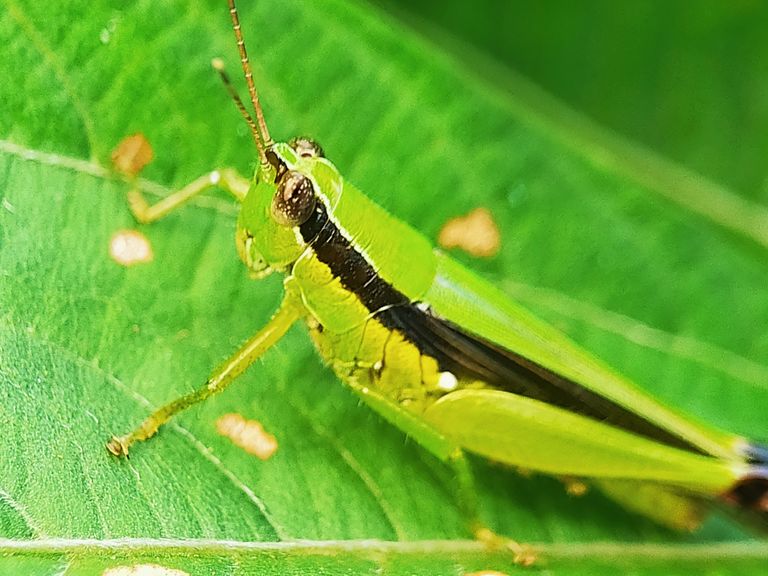
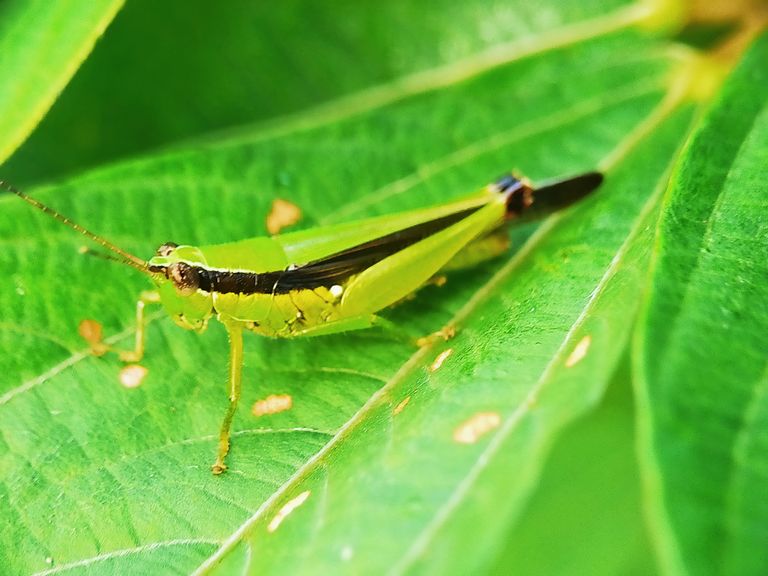
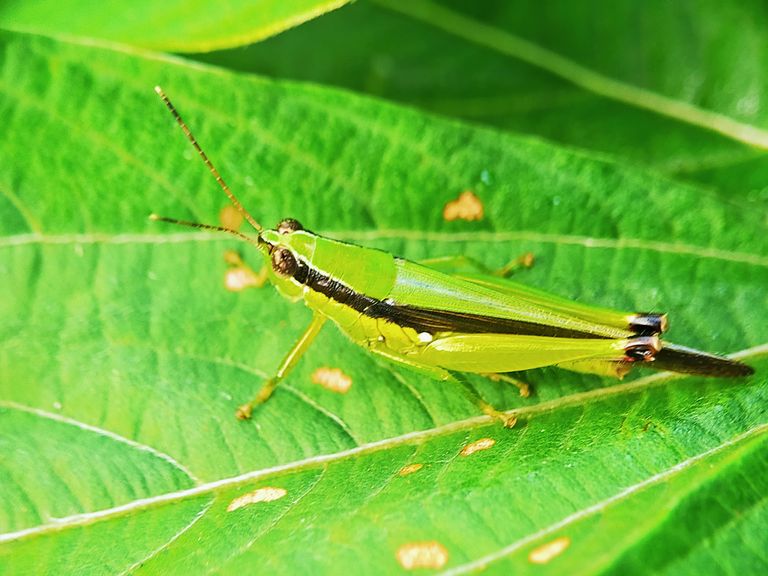
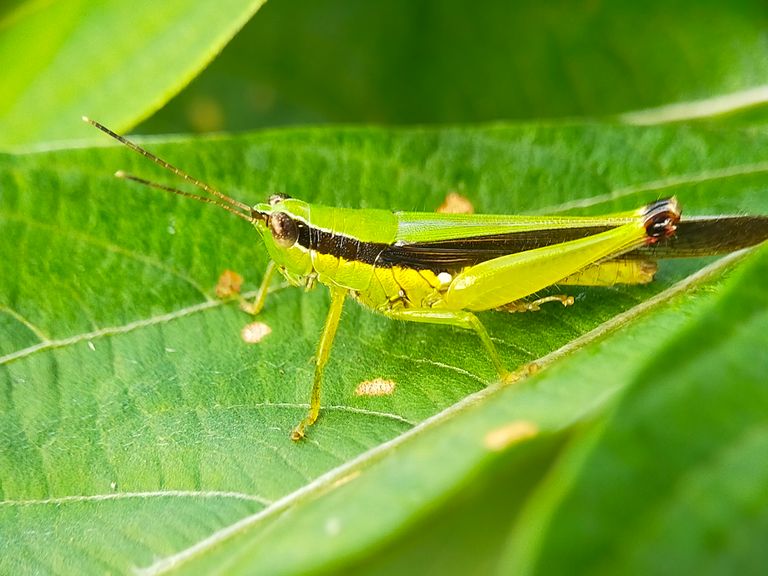


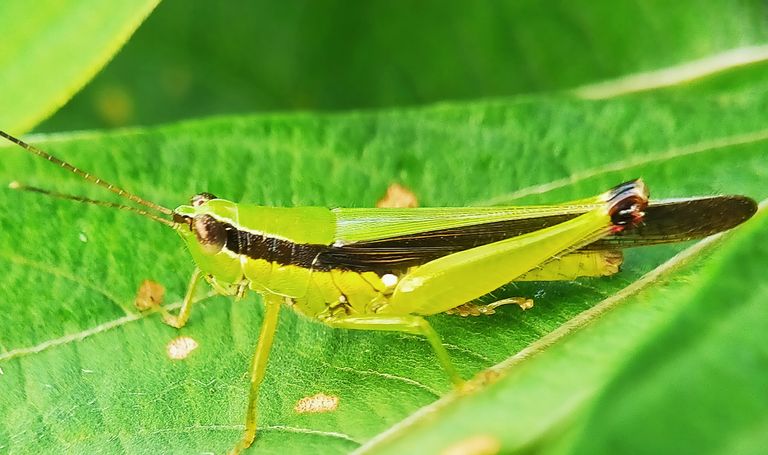
This is all I can say more and less I apologize, hopefully it will be useful for me, and hopefully it will be useful for all readers in general, thank you for visiting my blog, don't forget to follow and vote for my posts. , and one more thing, don't forget to share this post with other friends.
Thank you for visiting my blog, don't forget to follow and vote for me to post, and others don't forget to share this post with other friends.
Greetings to all on Blurtter...
** Your post has been upvoted (3.33 %) **
Curation Trail is Open!
Join Trail Here
Delegate more BP for bigger Upvote + Daily BLURT 😉
Delegate BP Here
Upvote
https://blurtblock.herokuapp.com/blurt/upvote
Thank you 🙂 @tomoyan